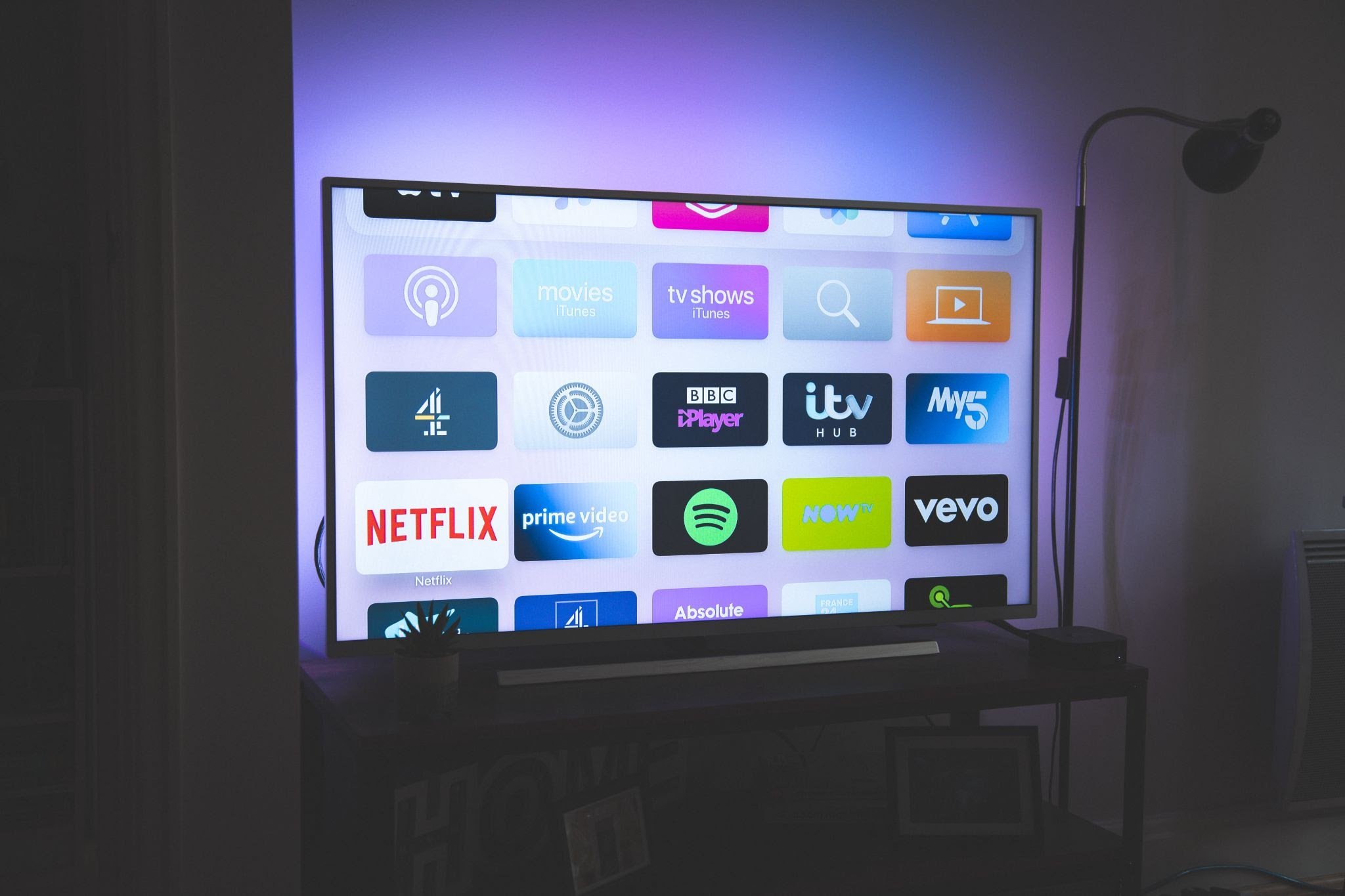What is CTV? In this complete guide, we break down everything marketers need to know about this powerful performance ad channel.
Everything you need to know about what CTV is, how it works, and how advertisers can make the most of this powerful channel
The way we watch television is changing, and we have CTV to thank for that. At the same time as consumers’ habits have changed, CTV has also empowered advertisers with performance marketing tools that were once relegated to online channels only. So what is CTV and how does it work? Let’s dive in.
Ready to learn more about combining the power of connected television with the measurement and attribution of performance advertising? Contact us to learn more.
What Is CTV Advertising?
CTV advertising is a term for the ads shown on connected TV devices. Many streaming services provide the option for viewers to watch shows for free, as long as they watch ads paid for by brands. Using CTV as an advertising channel enables advertisers to track those viewers who see a certain ad and end up purchasing the advertised products or taking the desired action.
That highly specific attribution is just one of the reasons CTV advertising is such a powerful channel. Other benefits of CTV advertising include:
- Expanded reach without increased cost
- Increased video completion rate (VCR)
- Receptive and engaged audiences
- Precision targeting
Of course, simply plastering an advertisement is not enough to engage your audience. To go beyond simple brand recognition and devise a top-tier marketing strategy for the modern, connected age, check out our free ebook, How CTV Advertising Powers the Performance TV Revolution:
164 million Americans watch CTV content. While watching, those viewers might see in-stream ads before or during a program or home screen ads that viewers can engage with to learn more about the advertised product or service. By using these formats, advertisers can create performance campaigns optimized for any number of key metrics, like cost per completed view (CPCV), cost per acquisition (CPA), average order value (AOV), and return on ad spend (ROAS).
To learn more about the promise of CTV advertising, check out our article: “What Is CTV Advertising? Connected TV & Its Role in the Digital Ecosystem.”
What Is the Difference Between CTV and Linear TV?
Let’s start with a connected TV definition: CTV is a device that can stream video content over the internet. Examples of connected TV devices include both smart TVs and external devices like Chromecast and Roku. Linear TV, on the other hand, is the more traditional viewing model that requires viewers to sit down to watch their favorite sitcom on a specific channel, on a particular day of the week, at a set time. DVR technology later gave viewers some flexibility by allowing them to record linear TV content and play it back later.
The traditional format of watching content on a set schedule determined by broadcasters isn’t as attractive as today’s on-demand model, which allows viewers to stream content any time, from any device. The number of households with paid, linear TV subscriptions (like cable or satellite) is shrinking, while the number of non-pay TV households is increasing. One quarter of 18-34 year-olds have never even lived in a home with linear TV. Cord-cutting is on the rise today, and evidence shows that CTV is here to stay.
One of the reasons CTV is so promising for advertisers is that it brings linear TV’s outdated metrics into the modern advertising era. For decades, linear TV advertisers used the Nielsen system to measure audience reach. This ratings system itself is full of flaws, as Nielsen selects which households receive their boxes and measures a show’s success based on these households’ viewing habits. With CTV, on the other hand, advertisers can measure and track specific viewers’ individual actions and analyze their reach using the detailed performance metrics they’re accustomed to.
For an in-depth explanation of the differences between CTV and linear TV advertising, check out our article: “Connected TV vs Linear TV — Understanding the Next Evolution of Television.”
What Is the Difference Between CTV and OTT?
CTV is often confused with over-the-top (OTT) ad channels. While CTV devices can host OTT content, the term “CTV” refers to the actual TV glass. OTT, on the other hand, refers to the content being streamed on CTV devices.
It’s important for advertisers to understand that CTV advertising refers to the act of running ads on CTV devices, while OTT ads run within the content being hosted on CTVs. If a Hulu viewer’s free content is interrupted by a commercial break, for example, those commercials are OTT ads and Hulu is an OTT channel.
These are some of the most popular monetization models for OTT channels:
- Pay-per-view (TVOD): Viewers pay for access to a piece of content, like a one-time livestream or broadcast, or a digital rental or downloadable purchase.
- Subscriptions (SVOD): Viewers pay for access to a library of content (usually on a monthly or annual basis). Connected TV examples that use the SVOD model include Netflix, Hulu, and Amazon Prime.
- Advertisements (AVOD): In order to access streaming content for free, viewers watch ads that are paid for by brands looking to connect with potential consumers.
To learn more about the differences between CTV and OTT and dive deeper into these monetization strategies, read our full article: “Connected TV vs. OTT - Unpacking the Over-the-Top Evolution.”
How Does CTV Work As a Performance Advertising Channel?
Performance TV advertising delivers ads to targeted audiences and then measures its results. By 2022, 60% of the US population is expected to tune into CTV apps. 81% of TV viewers would prefer watching content with ad breaks versus paying for a television subscription service. That’s why advertisers must understand the power of CTV as a performance channel.
Here’s how performance tv advertising works on CTV: When an ad is delivered to a CTV device, that device’s IP address is logged and stored. Each device that connects to that IP address within that household is also stored, so when someone uses their mobile phone to download an app or make a purchase that they saw advertised on their CTV, advertisers can attribute that result appropriately.
While linear TV uses a complex system of measurement spread across samples, panels, and indexes, CTV advertising works on an unambiguous, one-to-one attribution model. That is an incredible boon for advertisers, since they need to be able to prove campaign effectiveness in order to continue devoting their budgets to any given ad channel.
Read more about using CTV as a performance channel in our article: “Performance TV Advertising: How CTV Puts Television Back in the Marketing Playbook.”
How Do CTV Measurement, Attribution, and Brand Lift Analysis Work?
CTV measurement is a way for brands to assess the effectiveness of their performance TV advertising campaigns. Attribution allows advertisers to determine what path a consumer took toward performing a specific action, like seeing an ad for a product before purchasing it online, for example. CTV’s highly specific attribution model means that advertisers can track that consumer’s journey from seeing an ad on their TV glass to making a purchase using a laptop or mobile device.
The power of CTV measurement and attribution stand in direct opposition to linear TV advertising, which traditionally requires huge investment without providing sufficient clarity into campaign effectiveness. That’s why linear TV ads have typically been the domain of huge international corporations and household name brands; those are the kinds of companies that usually have the resources to sustain investment in imprecise brand awareness campaigns.
For performance marketers, on the other hand, metrics are what matter. CTV measurement, attribution, and brand lift analysis allow advertisers to track CPCV, CPA, and AOV with a high degree of precision. That empowers brands to build smarter ad strategies and invest their budgets where they’re likely to have the greatest impact.
Interested in learning more about how CTV will continue to evolve over the course of the year? Read our article: “How CTV Measurement, Attribution, and Brand Lift Analysis Work in 2022.”
What Is CTV Retargeting and How Does It Drive ROI?
CTV retargeting allows advertisers to show consumers ads on CTV devices after they have already been exposed to their brand elsewhere. Any consumer that has already interacted with the brand somehow, whether by seeing an ad on another channel, visiting the company’s website, or nearly making an online purchase, is a candidate for a retargeting campaign.
Because retargeting isn’t the first point of contact, it’s important that these funnel-pushing campaigns take advantage of available customer data, technological capabilities, and performance advertising best practices. Here are some of the elements of CTV retargeting that facilitate that:
- Precision targeting: Where linear TV requires advertisers to cast a wide (and inaccurate) net, CTV advertising platforms integrate with reliable third-party data sources to make sure brands show their ads to the right viewers at the right time.
- Premium experiences: It’s easy for ads on most devices to fade into the background — there’s always another app to open or window to tab over to. While watching CTV devices, viewers are primed to pay attention to the screen as their primary visual activity.
- Omnichannel coverage: For many advertisers taking an omnichannel approach, TV was the final frontier. Where linear TV was once too expensive, CTV capabilities put performance TV advertising within reach for brands of all sizes.
To learn more about how CTV retargeting can help advertisers build successful campaigns, read our article: “CTV Retargeting: Why Web-to-TV Retargeting Drives ROI.”
Now that we’ve investigated today’s CTV meaning and implications, it’s clear that television advertising is no longer limited to the Coca-Colas and BMWs of the world. At the same time, introducing a whole new advertising channel can be a daunting task. That’s where we come in; interested in partnering with tvScientific to add CTV to your performance marketing strategy? Get in touch today to learn more.








